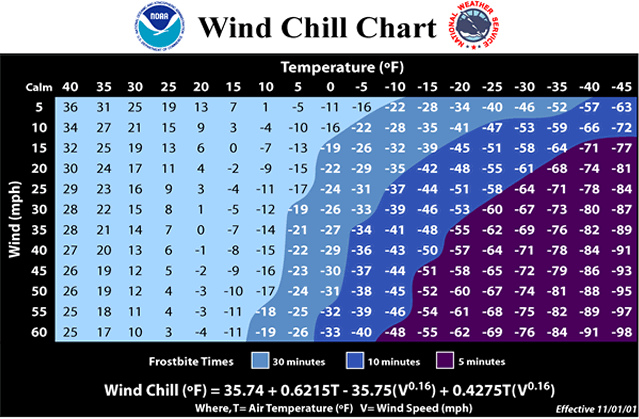Portage County offers tips on dealing with extreme cold
January 29, 2019
Portage County officials are urging residents to focus on safety during the deep freeze hitting Northeast Ohio this week.
Starting Tuesday night and into Thursday, temperatures are supposed to hit below zero with wind chills reaching more than 30 degrees below zero, according to the National Weather Service.
The Portage County Office of Homeland Security and Emergency Management (PC OHS/EM) sent out a press release Tuesday filled with tips to stay safe from the dangerous temperatures.
“It can take as little as 10 minutes outdoors in these low temperatures to develop frostbite or hypothermia. We are urging no unnecessary outdoor activity unless traveling to and from work or if you have an emergency,” wrote Ryan Shackelford, the PC OHS/EM director.
The press release advised checking on the elderly and neighbors in case they need help preparing for the bitter cold, refilling prescriptions, having batteries on hand in case the power goes out and keeping pets inside.
The National Weather Service out of Cleveland also issued a Wind Chill Warning for Northeast Ohio and Northwest Pennsylvania beginning Tuesday until Thursday evening. Temperatures Friday will be back in the teens.
The PC OHS/EM also warned residents of frostbite and hypothermia. In the sub-zero temperatures Northeast Ohio will face, it could take anywhere from 10 to 30 minutes of skin exposure to get frostbite.
SYMPTOMS OF FROSTBITE
Frostnip is the first stage, in which someone has numbness in a certain area. As the skin starts to warm up, it could cause pain. The first stage is not permanent.
Superficial frostbite is the second stage in which red skin turns white or pale. Stinging, burning and swelling are all signs, along with a fluid-filled blister.
Deep (severe) frostbite is the third stage in which the skin is permanently damaged. The skin turns white or blue/gray with numbness and loss of sensation. Large blisters can develop after 24 to 48 hours of trying to warm up the skin. The area then turns black and the skin eventually dies.
Information from MayoClinic.
Hypothermia is when the body’s temperature drops to 95 degrees or below, compared to its normal temperature of 98.6 degrees, according to MayoClinic. Symptoms include shivering, slurred speech, shallow breathing, weak pulse, drowsiness and lack of coordination. To prevent hypothermia, MayoClinic uses the acronym COLD:
-
Cover: Wear protective clothing to avoid heat escaping the body
-
Overexertion: Avoiding activities that could cause loss of body heat
-
Layers: Put on more than just one sweater or one pair of pants
-
Dry: Avoid water at all cost and try to stay as dry as possible
“It won’t be just really cold. It’s going to be hazardous to humans and pets,” Shackelford said. “Residents need to plan today to get errands done so they can limit their time outdoors this week when the cold hits.”
Here are more tips from the press release:
Light: Keep a flashlight and extra batteries handy. Using candles increase the risk of fire.
Warmth: Get extra blankets, sleeping bags and layer up. Avoid using gas stoves or other open-flame appliances as a heat source because it could cause carbon monoxide poisoning.
Water: Buy a supply of bottled water to have on hand.
Food: Stock up on convenience foods such as non-perishables and other foods you don’t have to cook. If power is out for four hours or more, the U.S. Department of Agriculture recommends discarding any perishable foods, such as meat and eggs.
News and information: Get a battery-powered radio and monitor news and social media.
Means of communication: Keep a cell phone nearby and fully charge it ahead of time. Report power outages to (888) 544-4877 or to call for help in an emergency.
Read the full press release below.
Lydia Taylor is the digital content editor. Contact her at [email protected].












